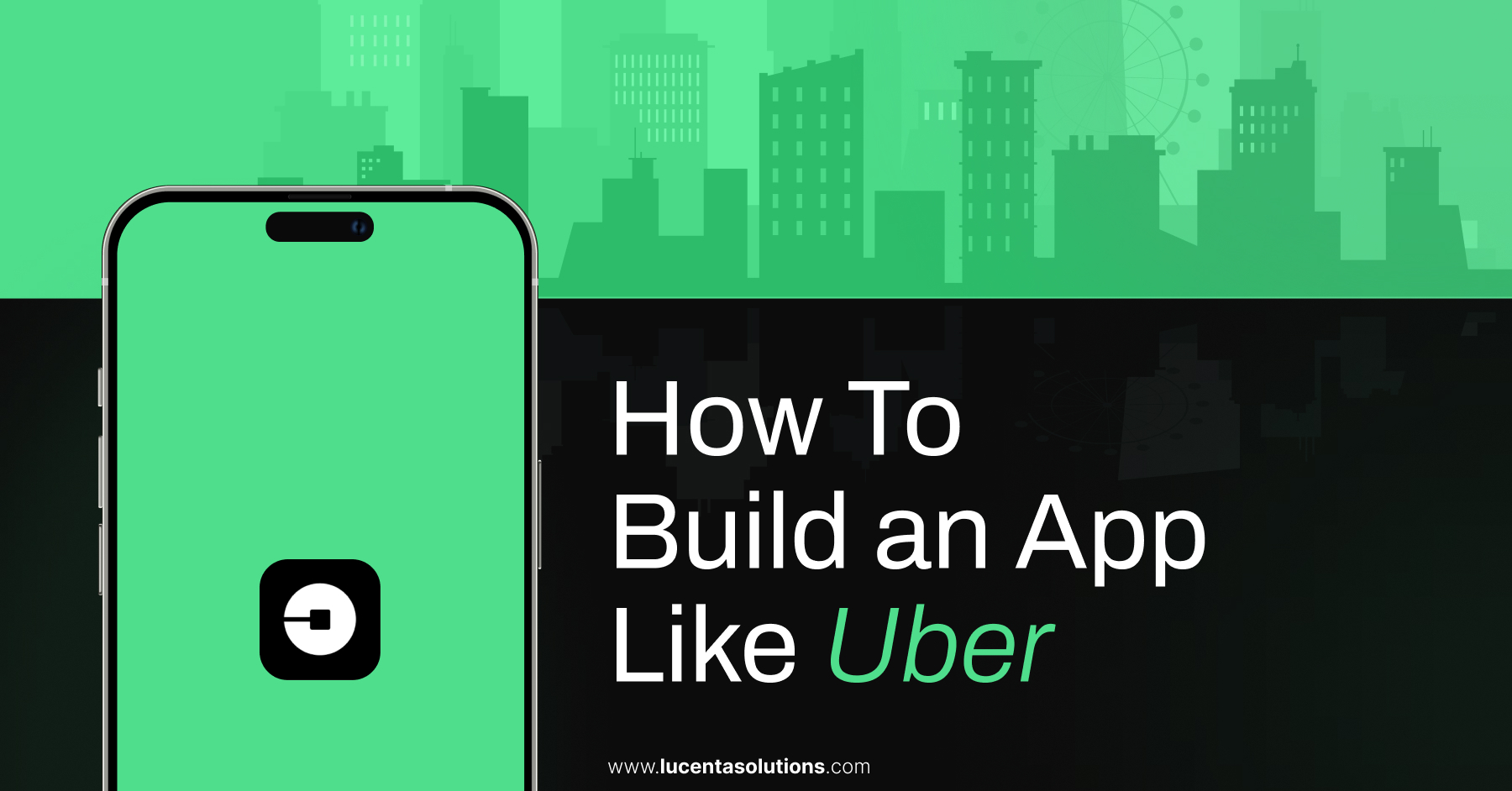How To Build an App Like Uber? A Complete Guide
The ride-sharing app market is growing rapidly. Today, every other smartphone has apps for better transportation. More and more businesses are investing in on-demand ride-sharing apps in an attempt to disrupt established players in the market, such as Uber.
According to one study, the size of the ride-sharing market was estimated at USD 85.8 billion in 2019 and is expected to expand at a compound annual growth rate (CAGR) of 16.6% from USD 100.04 billion in 2023 to USD 341.8 billion by 2031.8 billion by 2031. In a nutshell, the high demand for car-sharing ride apps is making entrepreneurs think about investing wisely to compete with a cab booking app like Uber.
To build apps like Uber, which has more than 150 million active users monthly, you need a solid team, tools, and strategies. Furthermore, you need to comprehend the company’s approaches to building an app. This article explains how the taxi app like Uber work, the technology used, and the app’s building procedure.
How Uber Works?
The idea behind apps that resemble Uber is to use location detection to assist you in submitting a trip request. The closest driver who accepts your request matches up with the app. You pay for the ride and have the option to rate it once the journey is over.
Uber lacks a fleet of its own. Instead, the software links drivers with their cab and riders together. Let’s break down the entire operation of Uber:
- Step 1: Using the Uber app, a passenger requests a ride at a predetermined location. Passengers can also check the fare for the ride in real time; however, this can change depending on the service and Uber app type.
- Step 2: The passenger verifies the ride and confirms the pickup location.
- Step 3: Uber finds the closest driver who can accommodate the request. The driver can accept or deny the ride. If a ride is turned down, the software switches the request to another driver.
- Step 4: Once the passenger reaches the destination, payment is automatically made. A payment card or account that the user has previously added to the app gets written off with the money. A mobile app like Uber has multiple payment options, including UPI, scanner, or cash.
- Step 5: The Uber app includes a rating feature. Drivers evaluate passengers as passengers assess drivers. Uber gives both kinds of users the most incredible experience in this way.
Image source- www.addevice.io
How to Build an App like Uber?
When creating apps like Uber, you need to consider various aspects. Let’s first check the features for passengers and drivers.
Features for passengers:
- Choose a location using an interactive map.
- An estimate of the cost
- Await for the closest driver’s confirmation of the ride.
- Get real-time tracking of the driver’s movement.
- Make the payment using any of the payment options.
- The driver’s rating and the ride experience they offered.
Features for Drivers:
- Acknowledge the passenger’s ride request.
- Find out how to approach the passenger.
- Get payment for each journey and assign a passenger rating.
- Let us now check the steps to build a cab booking app like Uber:
Defining the Target Market
It’s a good idea to create an app like Uber that includes several background checks. While developing an app similar to Uber, it’s a good idea to plan the overall path of the app development process and learn more about your target users.
Before beginning any project-related preparations, you should decide precisely which market you want to target. Furthermore, you also need to consider the location or the nation. Various nations have distinct economies, which leads to a need for varying forms of transportation.
For instance, if the selected city or nation has many bike-riding apps but no cab-riding-sharing apps, then you may end up with a failed product.
Decide on the Uber App Features you want to add
Uber app features are one of the reasons why passengers prefer this app. Also, entrepreneurs examine these features before going ahead and building one. Like Uber apps, if you are also working on something, you need to consider features. These are-
- User signup and sign-in: These functionalities are implemented by enabling social media, phone numbers, and email signups. More social media platforms have also been added for the verification and signup process.
- Cab Booking: The most essential element for developing an app similar to Uber is the ability to hire a car. Typically, this function is used to present consumers with an interactive map that allows them to select the sort of automobile they want, provide their specific address, and set the pickup location.
- Geolocation: It is an important features for a rider to select the destination and automated route map to know the distance and reach time.
- Fare Calculation: Riders should be able to see the total cost of the trip in advance. From a back-end implementation standpoint, this functionality might be challenging to create because the pricing is typically dependent on several aspects.
- Driver Tracking: This feature can help you create an app similar to Uber that people will adore. Before arriving, passengers ought to be able to monitor the whereabouts of their vehicle and receive a time estimate.
- Payment: Offer customers a variety of ways to pay for rides. This includes credit and debit card payments, PayPal, Android Pay, and Apple Pay. Remember to let customers pay with cash as well.
- Push notifications: These are effective ways to educate users about the progress of their ride requests, the driver’s identity, and other important information.
Ride-Sharing App MVP Development
Once you decide on features, it’s time to get ready for app development. However, you shouldn’t start from scratch to create a large-scale enterprise application. You should begin developing gradually, and making an MVP should be sufficient to release a usable product onto the market without requiring a significant investment of time or funds. It’s a tried-and-tested method for optimizing the return on investment from the early phases of development.
Considering Price Model
The aim of developing an Uber clone app is to make good money. Understanding the pricing model of the ride-sharing app is essential. Having a dynamic pricing model like Uber is the best way to survive. Here is how the price for each ride is calculated:
Base fare: The base cost of Uber services depends on the kind of car and location.
Cost per minute: GPS sensor data is used to determine costs.
The booking charge also called the safe ride fee, is a small amount that is deducted at the time of the ride.-reservations.
Similar to Uber, you can select one of the business models mentioned above or mix and match a number of them. You can choose to commercialize a mobile app like Uber in one of the following ways:
- Receiving commissions from drivers for each ride
- Trip fares from passengers
- Penalties for every ride cancellation
Consider Fraud Prevention
One of the essential things to consider when building a taxi app like Uber is fraud prevention. Finding and stopping hacks or any third-party attack is quite a challenge. While some people can think of unique ways to get around the system, very few can consider every possibility.
For instance, Uber drivers are rewarded with bonuses if they meet a set of goal rides. People will use various phone location apps to spoof their GPS data and complete rides while not doing anything to trick the system into thinking they have completed enough rides. However, Uber collects a variety of location data, speed, altitude, and other information, knowing that users are doing this.
Continuous Testing
Before you officially release your taxi app like Uber, conduct a thorough test. The app development team you hire has internal testing experts conduct testing to check if there are any bugs. Proper testing with the demo version can help ensure the final product is glitch-free and runs smoothly in Android and iOS systems.
What Technology is Behind the Uber App?
Uber constantly upgrades its app with new designs and features ensuring. To streamline the overall design of the app, Uber created its own React UI framework called Base. It has different elements, including colors, grids, typography, buttons, and iconography. This framework allows the design team to produce designs more quickly while upholding strict UI/UX standards and uniformity thanks to the framework.
Programming languages used to build apps like Uber are-
- Python – for a web-based booking app
- Node.js – for the Marketplace app
- Go – for improved performance and speed.
- Java – for third-party service integrations
However, some of the significant technologies you can consider creating an app like Uber:
Mobile Apps:
– iOS: Swift
– Android: Java, Kotlin
Frontend:
– Web: JavaScript, React
– Mobile Web: React Native
Machine Learning:
– Frameworks: PyTorch, TensorFlow
– Tools: Michelangelo (Uber’s ML platform)
It is important to note that these technologies can keep changing with the advancement in tools and development processes.
Conclusion
The increasing demand from customers for personalized on-demand taxi booking apps will open doors for more new apps like Uber. in the future. While Uber is well-established in the market and actively seeking to expand internationally, there is still potential for new players to enter and innovate.
Thus, if you are keen to build an app like Uber, it is best to hire a professional app development company. Lucenta Solutions is one of the reputed app development company that has been working with clients globally to build apps like Uber and apps for businesses from other industries.




